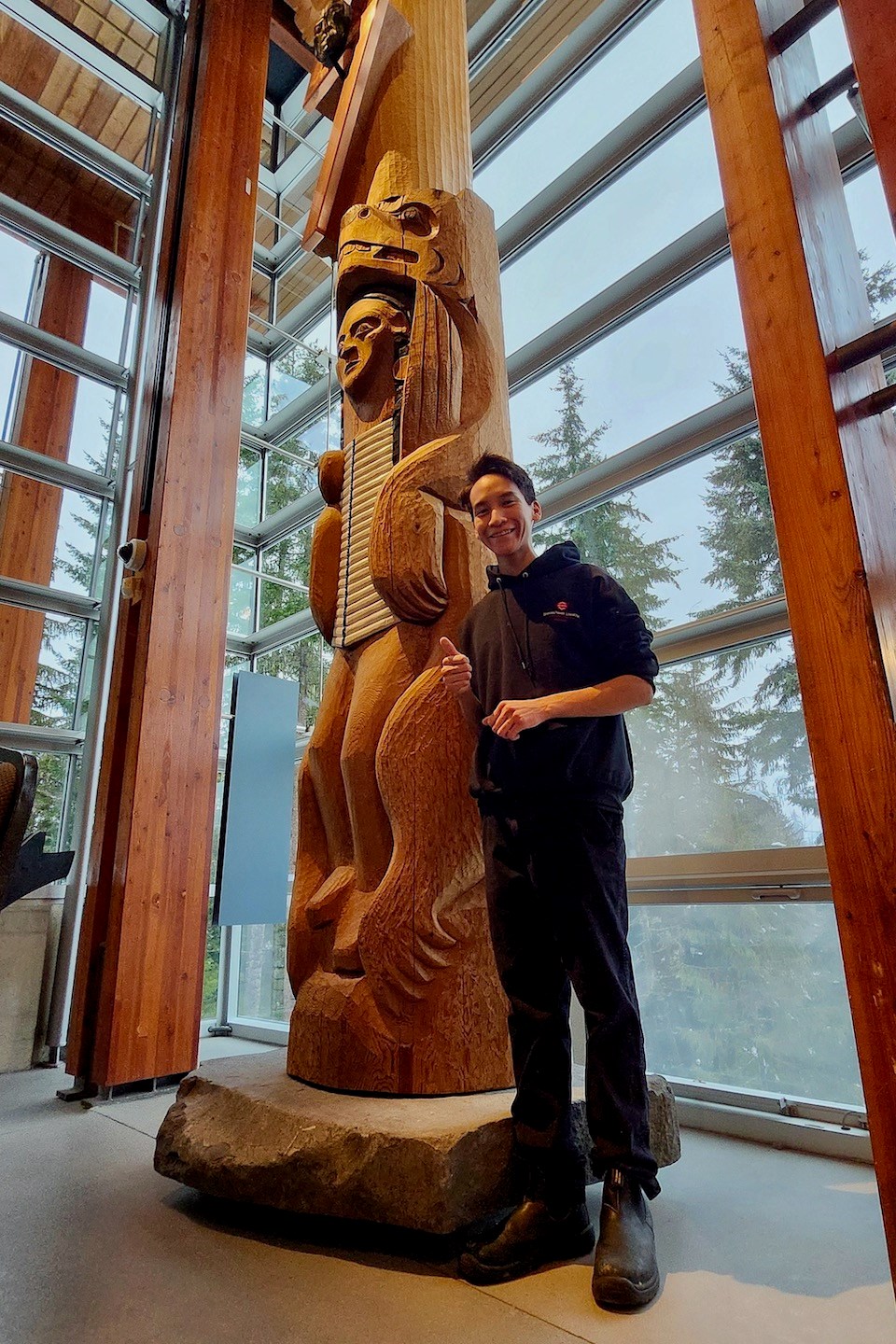There’s a 14-foot canoe hanging in the great hall of Whistler’s Squamish Lil'wat Cultural Centre (SLCC). It’s one of the last things Lil’wat carver Redmond Q̓áwam̓ Andrews saw his father make.
Unlike some other canoes in the SLCC, the suspended boat isn’t ornate; instead, with its flat edges and bottom, the traditional boat is designed to allow its occupants to stand up.
“So it’s like the first paddleboard,” jokes Andrews.
Andrews was always interested in carving, but it wasn’t until three years after his father, Lhalqw Bruce Edmonds, had passed that he fully picked up the torch.
“[My father's] best friend held onto his tools 'til I was 16, and that's when I went asking around for them,” recalls Andrews.
“The friend brought them to my grandmother's and my grandmother gave them to my cousin. My cousin dropped them off at my house, rolled them out on the coffee table, [and my family] all cried seeing them.”
Andrews works at the SLCC as a singer, storyteller and Cultural Ambassador. Like his father, the canoes he helps make are more than just decorative; they’re functional.
He points to a boat in the middle of the SLCC’s hall—the X̲aays Canoe. X̲aays is a 40-foot, ocean-going canoe with a more ornate design. After years of carving, Andrews and head carver Ray Natraoro Ses Siyam took it out on Alta Lake.
"There's a little bit of dirt probably still on the bottom from when we took it out on the water," suggests Andrews. “It handled really fast.”
Andrews' first pole is on display in the SLCC. Sqātsza7Tmicw ("Father Land") story pole stands 20 feet and took about five months for Andrews and fellow Lil'wat artist Ed Archie NoiseCat to design and carve.
Emblazoned across the front is something of a departure for totem poles; a massive bronze lightning bolt. Andrews credits the different approach to NoiseCat's encouragement.
“He was the one to start telling me to kind of come up with new traditions,” recalls Andrews. “Everyone before, they made new traditions.”
The bolt emanates from a thunderbird at the top of the pole. Andrews says the bolt represents the sharing of knowledge—a process he's involved in with the Lil'wat Nation.
On Dec. 16, Andrews led a carving workshop at the Lil’wat Youth Centre. It’s the latest in a series of sessions he’s held for younger members of the Lil'wat Nation.
“I always try and make time for the youth, whenever I can,” says Andrews. “I ran two or three classes at the Ts̓zil Learning Centre in Mount Currie, just for whoever was in our community college.
“The first few classes, we literally had almost the whole school show up.”
He expects to run a few more workshops in the new year.
X̲aays is one of two canoes in the SLCC Andrews worked on. The Community Reconciliation Canoe, unveiled in Fall 2022, was named "Sí7la" in honour of children in unmarked graves at residential schools.
"So 'the Sí7la' is actually 'the grandmother,'" says Andrews. "and there's a bunch of copper faces on the side [of the boat] that represent the children."
Part of the project, remembers Andrews, involved encouraging guests, neighbours, school groups and other members of the Nation to perform some of the carving themselves. He remembers some attendants being nervous about the prospect, but pushing through regardless, or choosing to sand or sign the paddle.
“They think like anything they're trying new is going to be difficult," he says. "But you only make things difficult if you tell yourself it's going to be difficult.”




